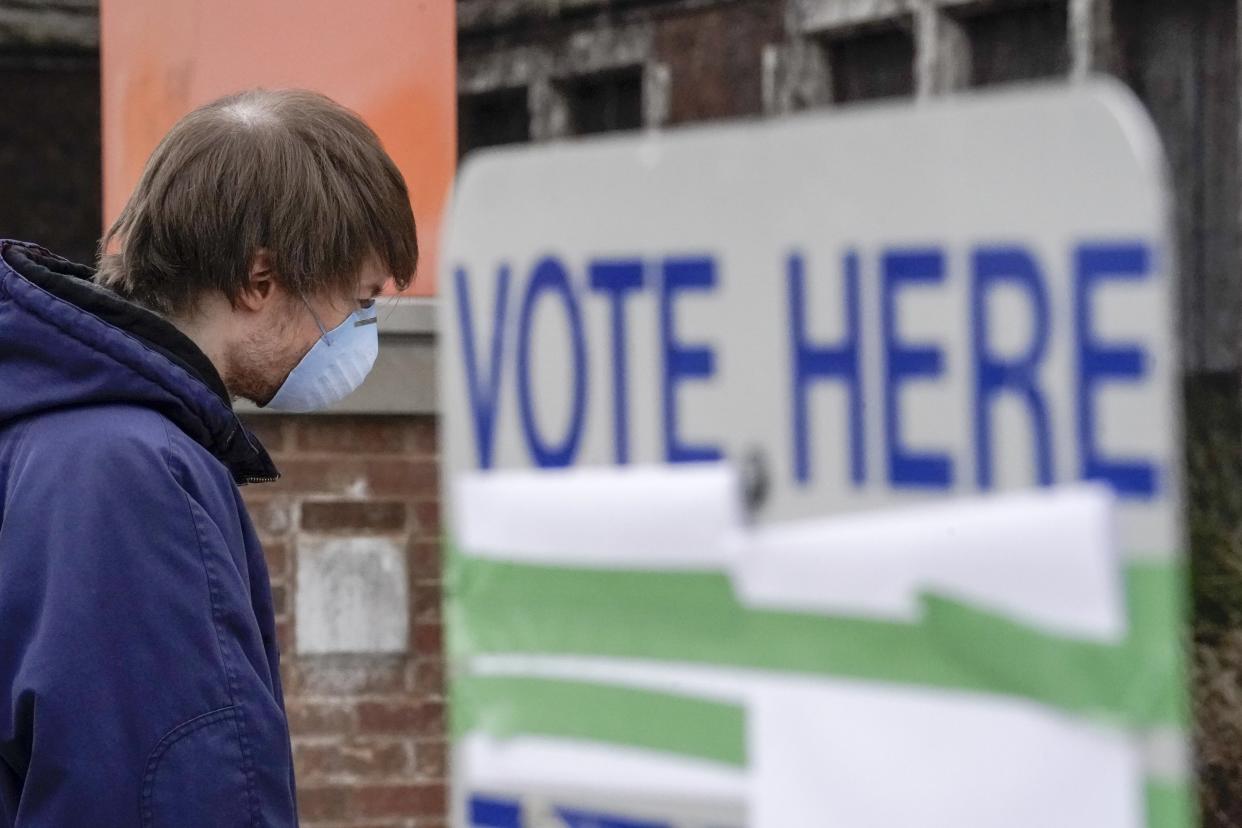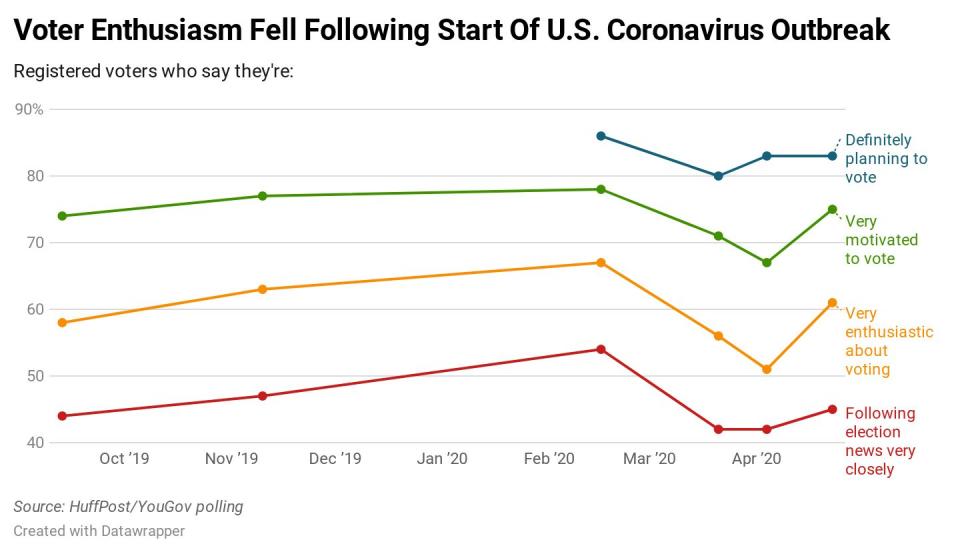Democratic Voters Lag In Enthusiasm About The 2020 Election

The Democratic Party’s electorate is less enthusiastic about the 2020 election than their Republican counterparts, according to a HuffPost/YouGov survey, a split in attitudes that existed before the coronavirus pandemic caused voters of all ideological and partisan stripes to become less gung-ho about casting ballots in November.
A relative lack of enthusiasm has been a persistent problem for the presumed Democratic presidential nominee, former Vice President Joe Biden, even as he continues to lead President Donald Trump in the vast majority of national public polling. Biden triumphed in his party’s primary even though polling indicated the supporters of his main rival for the nomination, Vermont Sen. Bernie Sanders, were far more fired up about voting than Biden’s backers.
Democratic officials disagree on the severity of the enthusiasm gap between their party’s electorate and the GOP’s, with many arguing voters’ intense dislike of Trump should be enough to drive the turnout necessary to defeat him, especially considering the advantage most polls show Biden enjoys among swing voters. But some Democrats are more worried, noting enthusiasm levels could be even more important than usual when vast numbers of voters around the country may be casting ballots by mail for the first time due to the pandemic.
In a newly released HuffPost/YouGov poll, Republican and Republican-leaning voters are 14 percentage points likelier than Democratic and Democratic-leaning voters to say they’re very enthusiastic about voting. Republicans have a smaller edge on two other metrics: they’re currently 10 points likelier to say they’re very motivated to vote, and 8 points likelier to say they definitely plan on voting. There’s relatively little difference in the attention each group is paying to the campaign.

GOP and GOP-leaning voters have consistently maintained an enthusiasm advantage in HuffPost/YouGov polling since last fall, although the size of that advantage has fluctuated significantly.
Several other surveys also have shown Democrats lagging on enthusiasm, although the findings have not been entirely consistent. CNN’s polling last month found Democrats’ enthusiasm decreasing, while among Republicans it remained stable, giving Trump supporters a sizable advantage on the metric. Biden also saw lagging numbers in a late March Washington Post/ABC survey, which found strong enthusiasm among Democrats for their party’s presidential pick at a 20-year low.
But in an April Monmouth University survey, which asked voters to rate their enthusiasm in comparison with past elections, the ardor level dropped mostly among Republicans, leaving the two parties roughly on par.
Addisu Demissie, who managed New Jersey Sen. Cory Booker’s White House bid, noted that the percentage of ballots cast by mail was expected to skyrocket in the key swing states of Michigan, Wisconsin and Pennsylvania ― and it could take a higher level of enthusiasm to convince voters to go through an unfamiliar process.
“Folks who are not typically mail voters, and folks who are not typically good voters, we’ve got to give them a reason to vote,” he said.
Polls taken throughout last year suggested an unprecedented wave of voter enthusiasm building around the 2020 election. By the end of last November, according to Gallup, voters’ enthusiasm for an election still roughly a year away was on par with the levels seen just days before the public voted in 2008 and 2012 ― and significantly higher than at any point in the 2016 cycle.
That momentum, however, appears to have been abruptly halted by the coronavirus pandemic, which rapidly overwhelmed news cycles. Between February and March, according to HuffPost/YouGov’s polling, the share of registered voters who reported that they were following election news very closely dropped by 12 points, and the share who said they were very enthusiastic about the election fell by 11 points. Two other self-reported metrics ― the share of voters who described themselves as very motivated and the percentage saying they were very likely to vote ― also saw downticks.
Several of those numbers have rebounded over the course of April. But voters’ self-reported attention, enthusiasm and motivation are still lower than they were near the end of last year.

There is an obvious precedent for a pandemic dampening voter turnout: In the 1918 midterm elections, held during the Spanish Flu pandemic, turnout fell to 40% ― a remarkably low total for the era. (Turnout during the prior two midterm elections topped 50%.)
Use the widget below to further explore the results of the HuffPost/YouGov survey, using the menu at the top to select survey questions and the buttons at the bottom to filter the data by subgroups:

The HuffPost/YouGov poll consisted of 1,000 completed interviews conducted April 21-23 among U.S. adults, using a sample selected from YouGov’s opt-in online panel to match the demographics and other characteristics of the adult U.S. population.
HuffPost has teamed up with YouGov to conduct daily opinion polls. You can learn more about this project and take part in YouGov’s nationally representative opinion polling. More details on the polls’ methodology are available here.
Most surveys report a margin of error that represents some but not all potential survey errors. YouGov’s reports include a model-based margin of error, which rests on a specific set of statistical assumptions about the selected sample rather than the standard methodology for random probability sampling. If these assumptions are wrong, the model-based margin of error may also be inaccurate.
Love HuffPost? Become a founding member of HuffPost Plus today.
This article originally appeared on HuffPost.

